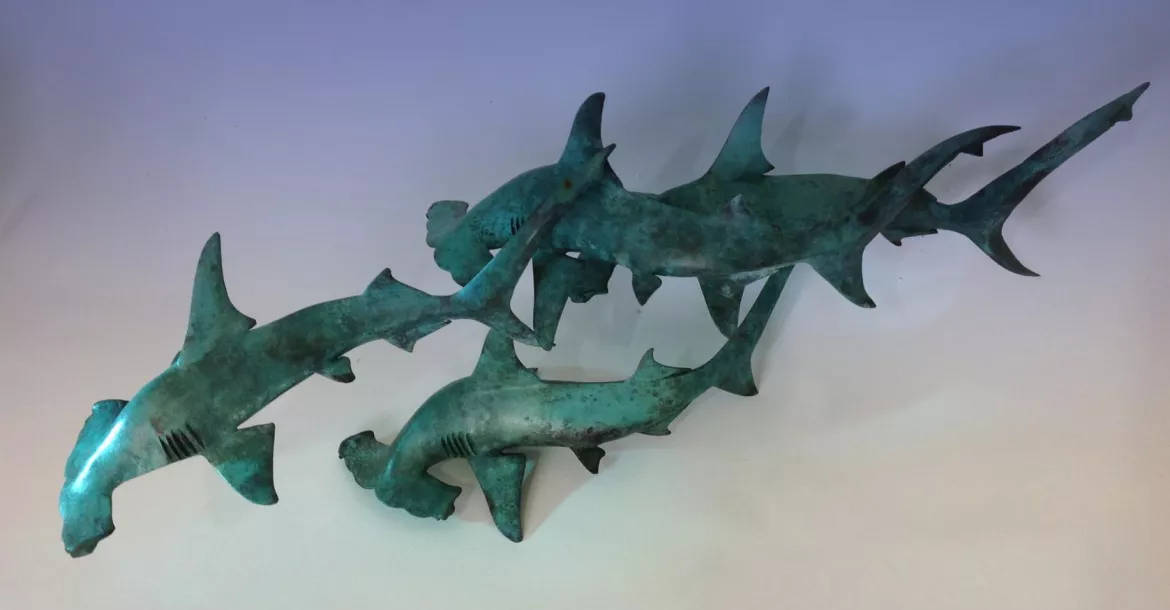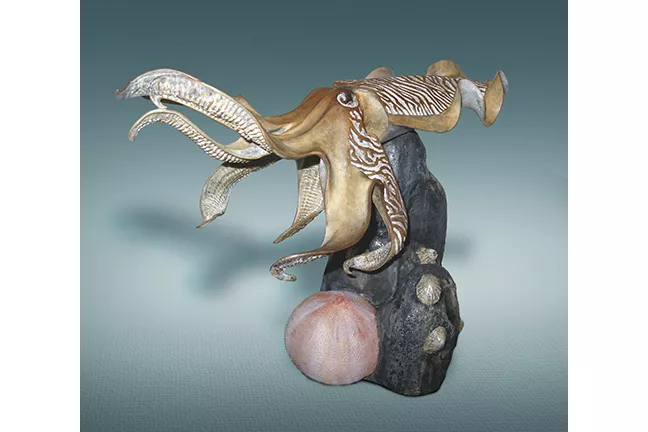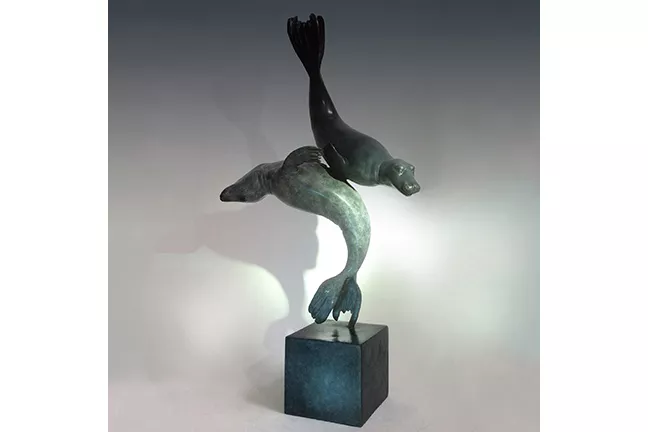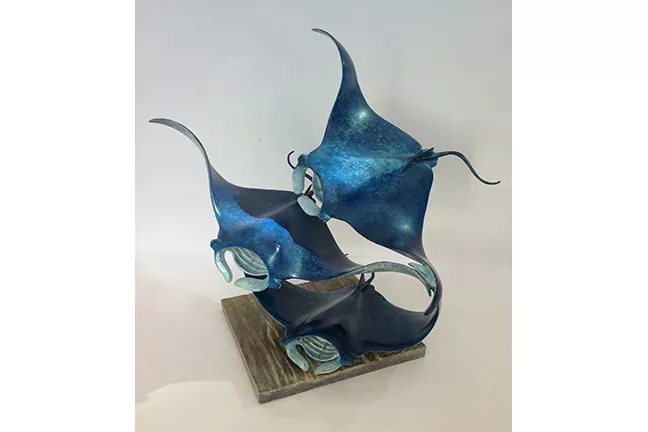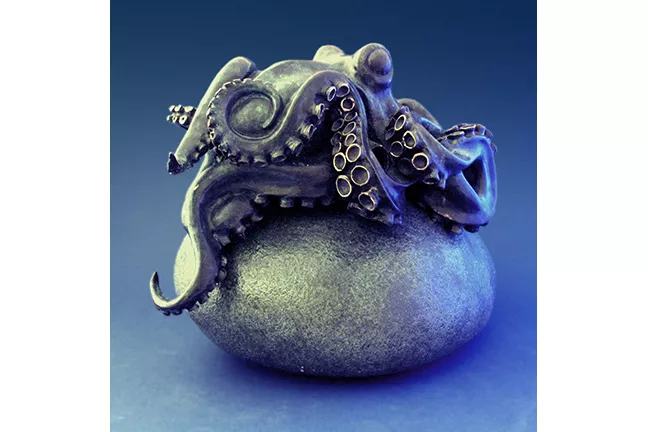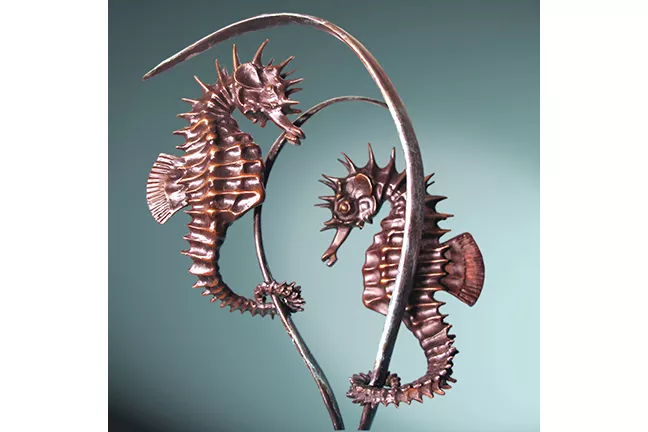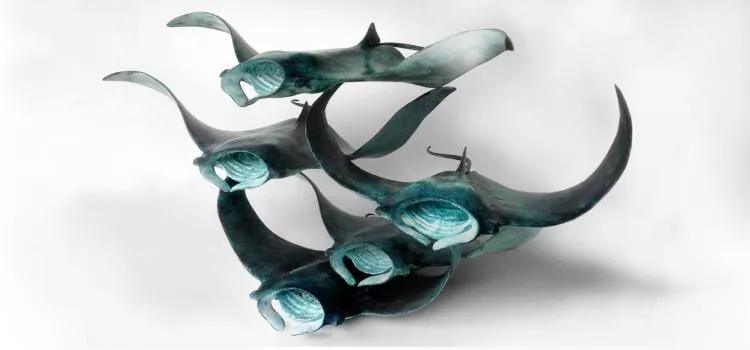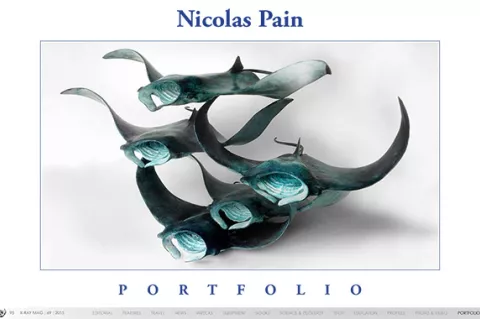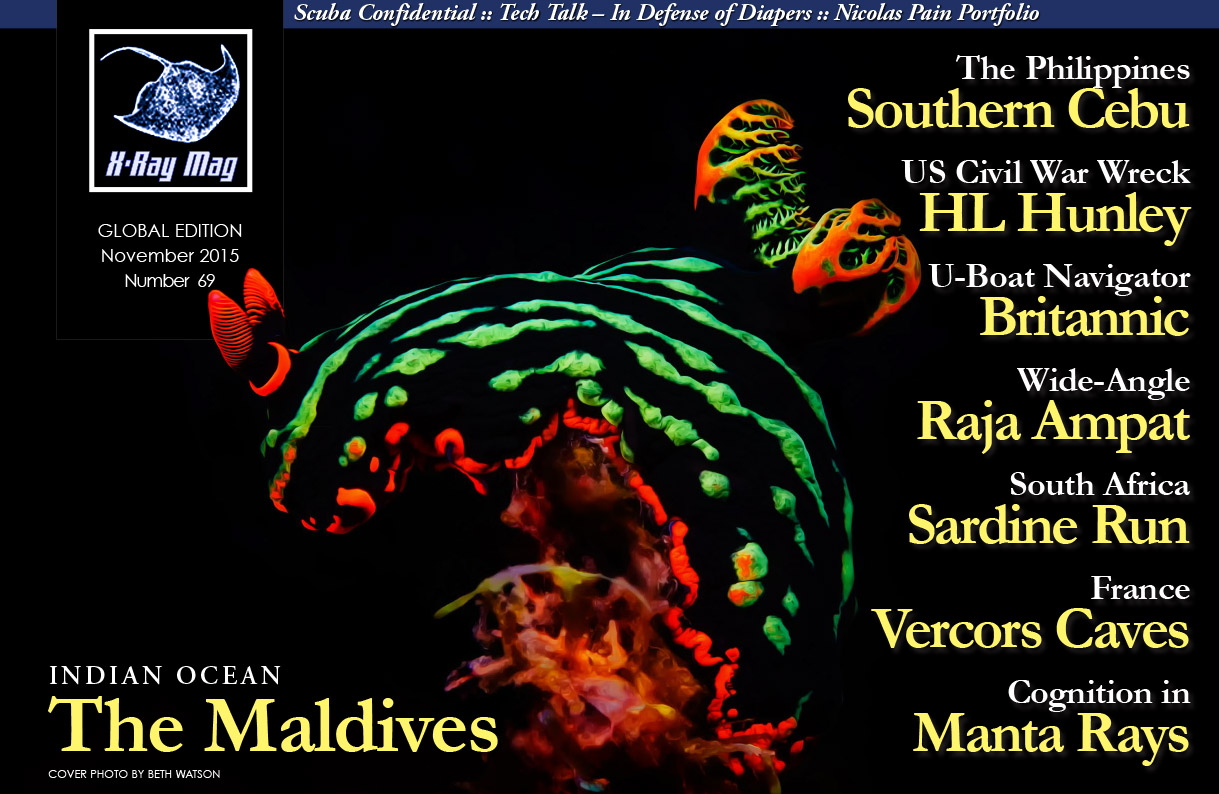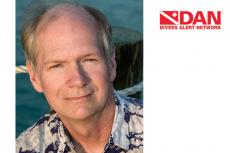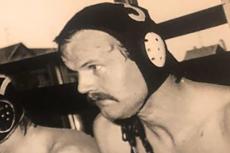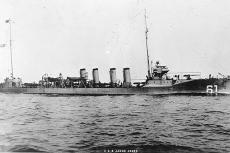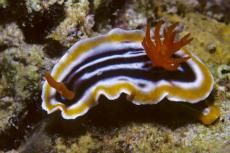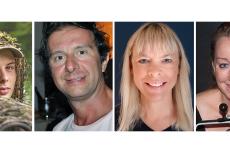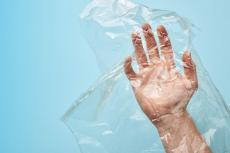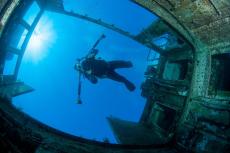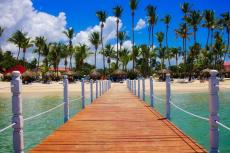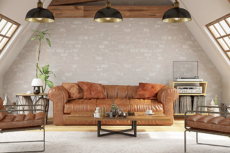
Nicolas Pain Portfolio
British artist, Nicolas Pain, creates sinuous and sublime bronze sculptures of marine life, full of movement and evoking an atmosphere of water, inspired by his own adventures under the waves as an avid scuba diver. X-RAY MAG interviewed the artist to find out more about the self-taught artist’s graceful sculptures and what excites him about the underwater world.
Contributed by
X-RAY MAG: Tell us about yourself, your background and how you became an artist.
NP: I always liked painting and drawing but enjoyed making models most of all as I was growing up. Looking for a means of turning my artistic skills into a career, I initially studied graphic design and entered the advertising industry on graduating in 1990. I didn’t really take to this, so I then moved into video games in 1999, working as a 3D modeller and texture artist. I eventually ending up as the art studio manager for one of the United Kingdom’s leading game developers—if you are into driving games, you’ve probably played some of the titles I’ve worked on over the years. I started sculpting in my free evenings and at weekends as my career became more management-orientated. I needed a creative outlet with a direct response to my diving.
X-RAY MAG: Why marine life? How did you come to this theme and how did you develop your style of sculpture over time?
NP: I started diving in 2000 and quickly became hooked. The choice of subject matter for my work was then very easy and natural: the creatures I encountered while diving. My first piece was the Octopus, which was inspired by a year in which I frequently saw these fascinating animals both in the UK and abroad.
A particularly memorable occasion was under the stern of the wreck of the Hispania in the Sound of Mull, which gave me the idea to seat it [the octopus] on a rock. The other pieces then swiftly followed, after I exhibited the Octopus at the Society of Wildlife Artists annual exhibition at the Pall Mall Galleries in London, encouraged by a very positive response to my debut piece.
My work has then developed to focus more on the movement of undersea creatures, an aspect of my work which is very much driven by my diving. The final configuration of the Hammerhead Sharks came out of the problem of how to mount and display the individual animals without interfering with their fluid swimming motion. This resulted in, after much trial and error, balancing them fin tip to fin tip without a mount or base. I worked this out by building a large wooden frame and hanging individual models from wires until I achieved a satisfactory balance and composition. This is a theme that I have pursued in my most recent work the Grey Seals and Manta Flight.
X-RAY MAG: What is your artistic method or creative process? In step-by-step terms, how do you create your artworks?
NP: Some of my work starts simply by diving and seeing something that sparks my imagination, the way a creature moves or how a group of creatures move together. Another source of inspiration is the work of underwater photographer and friend, Rob Bailey.
Once I have decided on a subject, I then make a number of rough models to get a sense of the overall shapes and configuration of the final piece. This can take a lot of iteration, but when this is resolved, I then make much more detailed models and really focus in on the creature’s anatomy and muscle structure. The final models are then used to produce moulds for waxes, which are used in the lost wax casting method. The resulting bronze casts are then chased to emphasise smaller details, treated with a chemical patina and polished with tinted waxes to produce the final coloration that you see.
X-RAY MAG: What is your relationship to marine life and the underwater world? How did you get into diving and how has diving influenced your art? In your relationship with fish and the sea, where have you had your favourite experiences?
NP: I have always been fascinated by the underwater world probably starting with the Jacques Cousteau documentaries of the early 1970s, which I watched as a child. They were full of weird and wonderful creatures and the promise of sunken treasure. I started diving 15 years ago with a local BSAC club where I made many good friends and learnt a great deal. As my interests and desire to undertake more exploratory trips broadened, I bought a small RIB and now mainly dive with my girlfriend, Rose, who is a marine wildlife jeweller.
Diving has had a profound influence on my work, both in terms of the choice of subject matter but also the portrayal of the movement of these creatures. I think seeing them move underwater in a different medium is an enduring theme that I strive to reflect in my work.
My favourite experiences are those special encounters with marine animals; the octopus will always be a favourite because of the multiple different shapes this creature can assume. I’m now working on a larger more detailed sculpture.
Another special memory is a day when our diving was actually blown out, and we were walking on Looe Bar Cornwall. The bar was unusually covered with a warm-water species of jellyfish, which had been blown off-course, including Portuguese man o’war. It was then that we found a juvenile loggerhead sea turtle; he was hypothermic and dehydrated. We called the Blue Reef Aquarium in Newquay and arranged to meet the guy who runs the rescue program. We then carried the turtle in a bucket of sand to the nearest village, Porth Leven, where we handed him over to Matt from the aquarium. Squirt, as the aquarium later christened him [the sea turtle], made a full recovery and was later released in Tenerife.
Of course, dolphins are always exciting fun both here in the UK and in the Red Sea. I’m always surprised how big they are. We’ve often see small family pods in Cardigan Bay when diving on Sarn Badrig in North Wales.
X-RAY MAG: What are your thoughts on ocean conservation and how does your artwork relate to these issues?
NP: I am very concerned with the declining levels of marine wildlife through over-fishing and pollution. I often think for every fish I see, there would have been 10 more 50 years ago. I exhibit my work with the David Shepard Wildlife Foundation in their annual London exhibition. Fifty per cent of the proceeds goes to the charity. So I was very pleased that my Grey Seals sold there earlier this year. I think my work represents a simple appreciation and admiration for marine life and hope that it communicates this respect to others.
X-RAY MAG: How do you come to your ideas and what or who inspires you? What is the message or experience you want viewers of your artwork to have or understand?
NP: Diving, above all, is my main inspiration. My first hand experience of seeing the animals move underwater is a unique experience that brings an additional dimension and authenticity to my work. I think my work has as simple message:
Look at this creature. It is complex, beautiful and precious. It deserves our respect and many now need our protection.
X-RAY MAG: What are the challenges and/or benefits of being an artist in the world today?
NP: I think the Internet is one of the greatest benefits of the world today. It has enabled me to reach a much wider audience than I could have in the pre-World-Wide-Web days. I have a lot more direct contact with clients and many more opportunities to display my work. My main challenge is never having enough time—either for diving or artwork
X-RAY MAG: How do children and adults respond to your work? What insights have you gained from the process of showing your work to different audiences?
NP: My main audience is largely made up from divers who often relate my sculptures to their personal experiences. I also have a growing cliental of non-divers who have an interest in wildlife again, who often describe personal encounters with marine creatures as the attraction of my work. I find this reassuring, that my work is capturing the essence of these animals so that it evokes these responses and memories in others.
X-RAY MAG: What are your upcoming projects or events?
NP: I’m currently working on two new pieces at the moment: a much larger and more detailed free-standing octopus and a large manta rays sculpture. I’m aiming to have these ready for exhibition next year. A selection of my work will be on display at the NEC Dive Show, Birmingham, UK (24-25 October 2015). My work is also on display in the No. 4 Gallery, just above St Abbs harbour. I’d really like to hear from readers and hope to exhibit my work internationally in the near future.
For more information about the artwork and commissions, please visit the artist’s website at: Nicolaspain.co.uk.
I think my work has a simple message: Look at this creature. It is complex, beautiful and precious. It deserves our respect and many now need our protection.
— Nicolas Pain
Published in
-
X-Ray Mag #69
- Læs mere om X-Ray Mag #69
- Log ind for at skrive kommentarer
